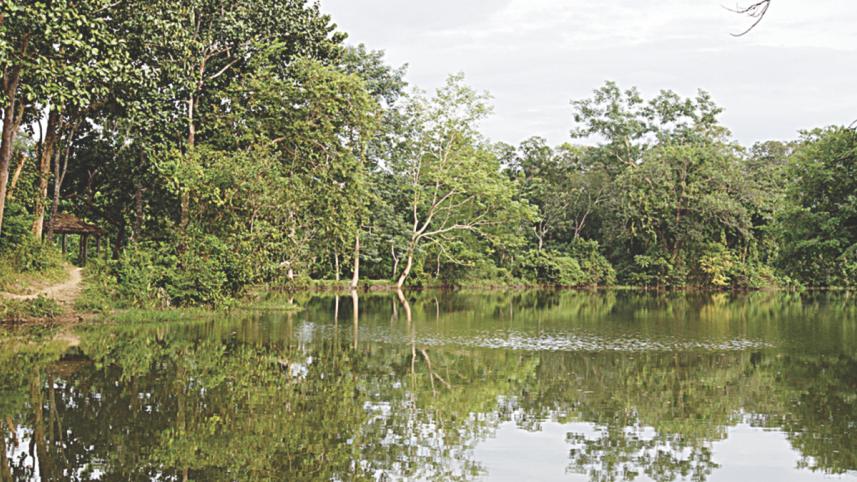Back to Kalenga

Some places are so primeval that they inspire and awe us. Rema-Kalenga Wildlife Sanctuary, a 1796-hectare reserve forest in Habiganj, is one of those places. Established in 1996, this large protected forest is composed of two parts: Kalenga and Rema. To get to Kalenga from Dhaka you take the Sylhet highway and turn right at the Habiganj-Chunarughat roundabout. You go past Surma and Chaklapunji Tea Estates and Satchari Reserve Forest, eventually reaching a T junction. Here you turn right and travel another ten kilometres. The last four kilometres are unpaved and lead to the park entrance. The drive from Dhaka is 4.5 hours.
I went there two years ago, but only for a few hours. This time I wanted to stay overnight to experience the forest in the early morning. The cabin at the park entrance - with three rooms and solar power (the remote region is outside the power grid) - is functional and convenient. I stayed here for the night and owner Abdur Rahman served home-cooked meals.
I arrived in time for a delicious lunch. Then I met up with Rahim, a knowledgeable and friendly guide. We entered the forest through a grove of teak trees that were planted perhaps fifty to one hundred years ago. Walking past the grove we entered a different, dramatic flora.
Indeed, a major attraction of the park is the original, old-growth forest. It is one of the few places in Bangladesh where one can see what once was. Native trees include chapalish, chhatim, bot, jarul and various flavours of koroi. But because they are very old – perhaps a hundred years or more – they somehow look different than their younger versions one sees elsewhere. They are bigger and taller, of course, but the trunks are gnarled and wrinkled and often wrapped by fat creepers and vines. A total of 638 different species of plant life have been identified in the forest.
There are twenty mammal species in the park including several primates. I saw capped langurs, Phayre's langurs and a variety of squirrels. It was also at Kalenga that a flying squirrel was identified and photographed for the first time in Bangladesh by Saniar R. Rahul. Barking deer, civet cats, slow loris and otters can be seen if you are patient.
Over 200 bird species have been counted in the forest, most of them songbirds. These were my main interest.
Today, however, the afternoon sky was dark and cloudy, keeping the birds out of sight. The first half of our hike disappointed. In the distance, we saw a flock of green pompadour pigeons on top of a tall tree, too far to photograph. Later, my prayers were answered when the sun appeared, and with it, the birds. We saw bronzed and racket-tailed drongos, white-throated bulbuls, lineated barbets and a rare blue-bearded bee-eater before darkness set in.
The next morning we started early after a filling breakfast of kholajai pitha and omelet. Near the forest offices, on a banyan tree, several birds were noisily eating fruits and insects. These included red-whiskered bulbul, scarlet-backed flowerpeckers, sunbirds and flycatchers. Further into the hike, we saw another fifteen or twenty species of birds, most of them new to me. Two stood out for their beauty: the brightly coloured yellownape woodpeckers, and a brilliant scarlet minivet. At one point there was a great commotion deep inside the forest and we knew a raptor had descended among the smaller songbirds.
Soon it was time to leave. It was with a heavy heart that I said goodbye to the forest, promising myself to return soon.
www.facebook.com/tangents.ikabir.



 For all latest news, follow The Daily Star's Google News channel.
For all latest news, follow The Daily Star's Google News channel.
Comments